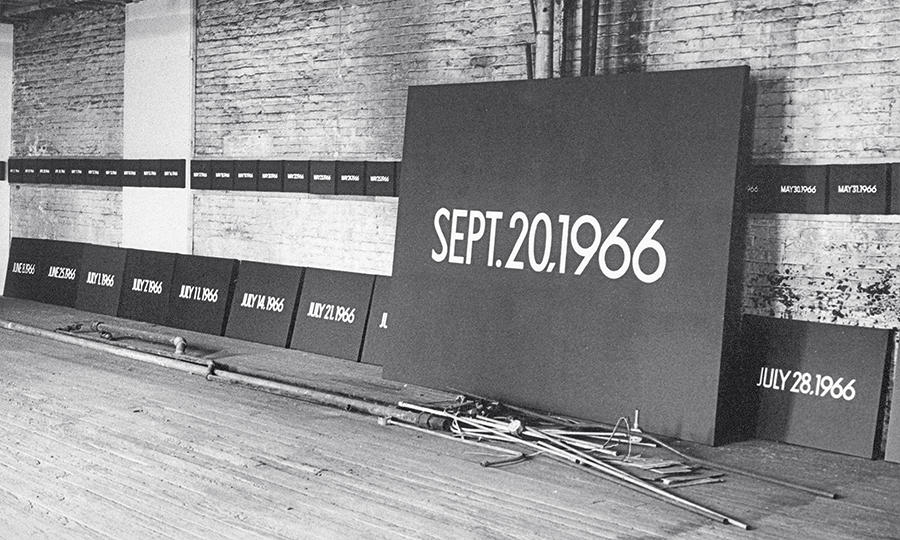On Kawara’s ‘Today’ Series
‘This is the passing of time visualized through a contrapuntal freezing of it’
‘This is the passing of time visualized through a contrapuntal freezing of it’

We do little but look for ourselves, in life. A journey taken, a plan sketched, a promise snapped in pieces: each and every external gesture is an attempt to know the world as it exists in relation to ourselves. When we peer out, we peer in: faces reflected in the glass.
The same can be said for art, and few projects visualize this ceaseless process of (self-)exploration more poetically than the seemingly innumerable panels of On Kawara’s ‘Today’ series, which began on 4 January 1966 and continued up to 2014. The works, of which there are close to 3,000, are known as ‘date paintings’. They are just that: monochromatic panels of grey, red or blue, upon which Kawara painted the date of their conception. This is the passing of time visualized through a contrapuntal freezing of it.
To flick through Kawara’s timestamps is to frantically search for some vague semblance of yourself; to scramble for a single date that, while it may have fallen victim to the passing of years, remains urgent still. ‘Apr. 2, 1972’, ‘Feb. 23, 1992’, ‘Sept. 4, 1999’. To mine these dates for potential significance is to trespass on the property of ghosts. But to search is, by definition, to fail. One may glimpse a personal detail or delicacy but, as a result of the magnitude of Kawara’s project and the relatively uninteresting nature of life, what is most frequently found is a feeling of irrelevance.
It is, however, a generative irrelevance, for in this acceptance of insignificance we concede that an unknown date may be, must be, crucial to another and, as such, are made aware of the thick crowd of people who are standing in the same room – searching also, failing also, searching still. ‘Jan. 4, 1966’ is, to me, little more than three letters, five numbers, a dot and a hook. But, to you, it could be a birth, a breath, a death.
In this, ‘Today’ channels what it is to be both significant and of slight consequence; what it is to cherish a moment and be unloving of life; what it is to be alone and inextricably bound to an unknown quantity of others, each of whom is similarly anxious about their exact position within the world. It gives you an idea of what it is to be alive.
I am looking for a single date, within Kawara’s panels, and I have done so for almost 15 years. I may not find what I need. It may not exist. But I am looking.






















